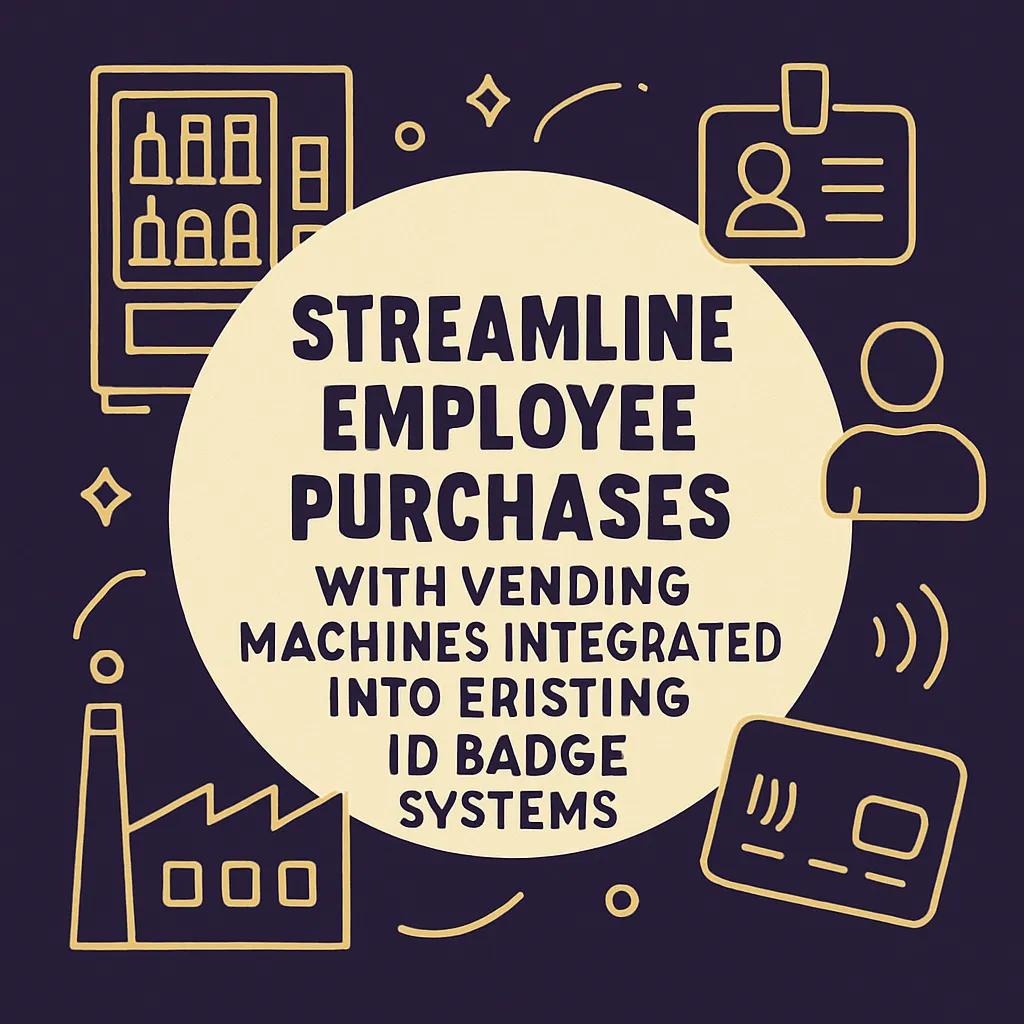Integrating Vending with Employee ID Systems
Streamline employee purchases with vending machines integrated into existing ID badge systems. Explore cashless payment convenience for industrial workforces.
Back to Vending for Warehouses ResourcesStreamline employee purchases with vending machines integrated into existing ID badge systems. Explore cashless payment convenience for industrial workforces.
Back to Vending for Warehouses ResourcesModernize your workplace refreshments by integrating vending machines directly with your existing employee ID badge or access card systems for ultimate convenience and efficiency.
![]() Cashless convenience using existing employee badges
Cashless convenience using existing employee badges
![]() Simplified expense tracking and reporting for HR/finance
Simplified expense tracking and reporting for HR/finance
![]() Enhanced security and controlled access to products
Enhanced security and controlled access to products

In today's fast-paced industrial and warehouse environments, efficiency and convenience are paramount. Integrating vending machines with employee ID systems offers a cutting-edge solution to streamline refreshment access, enhance security, and simplify administrative tasks. This approach transforms the traditional vending experience into a seamless, cashless transaction system, making it ideal for large facilities where employees may not always carry cash or traditional payment methods.
Imagine your team members getting a snack or drink simply by swiping their existing company badge. This not only speeds up transactions but also reduces the need for cash handling, minimizing potential hygiene concerns and theft risks. Such systems are particularly beneficial in environments like warehouses or manufacturing plants, where workers are often on the move and focused on their tasks. Companies can even use these systems to offer employee snack programs, providing subsidies or free items as a perk.
Beyond convenience, employee ID integration provides powerful management capabilities. Businesses gain better control and oversight of vending machine usage. This can include tracking popular items, monitoring inventory levels, and even establishing employee spending limits or subsidized programs. The data collected can inform future stocking decisions, ensuring that machines are always filled with products your team genuinely wants. This level of insight also helps in optimizing machine placement, such as near high-traffic breakrooms or production areas, further improving accessibility for shift workers.
Furthermore, these integrated systems are highly adaptable. They can be configured to work with various types of employee IDs, whether magnetic stripe cards, RFID badges, or proximity cards. This means minimal disruption to existing access control infrastructure. The secure nature of these transactions also aligns with modern corporate security standards, protecting both employee funds and company assets. For businesses looking for robust, heavy-duty machines suitable for industrial use, exploring information on best vending machines for industrial facilities can provide valuable insights.
Ultimately, integrating vending machines with employee ID systems is a strategic investment in employee satisfaction, operational efficiency, and workplace modernization. It offers a cleaner, faster, and more secure way for your team to access refreshments, contributing to a more productive and appreciated workforce.
It streamlines cashless payments, enhances security, simplifies expense tracking, and provides convenience for employees.
Employees can typically use their existing company ID badge or card to make purchases, deducting funds from a linked account or payroll.
Yes, modern systems use encrypted transactions and secure authentication protocols to protect employee data and funds.
Yes, these systems often come with management portals that allow businesses to track sales data, product popularity, and usage patterns by department or individual (with appropriate privacy considerations).
Most systems are compatible with standard RFID badges, key cards, magnetic strip cards, and other common employee identification formats.
There may be initial setup or customization costs, but these are often offset by increased efficiency, reduced cash handling, and potential tax benefits for employee perks.
Absolutely. Businesses can configure the system to offer partial subsidies, full subsidies, or designated credit amounts for employee purchases.
Potential challenges include initial integration complexity, ensuring employee buy-in, and maintaining data privacy.
No, most integrated machines also support various other payment methods like credit cards, mobile payments, and sometimes cash, ensuring accessibility for all users.
It provides rugged, convenient, and sanitary payment options for workers who may not carry wallets or phones on the floor, enhancing efficiency and satisfaction.